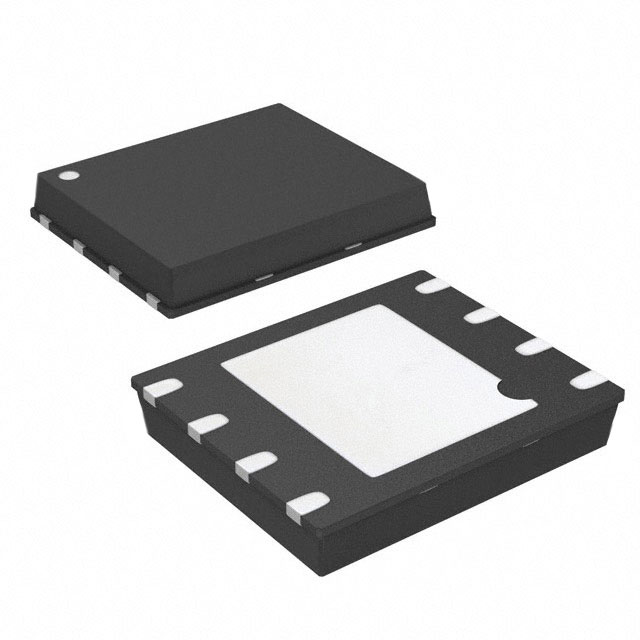AT45DB161E-MHD-T
Product Overview
- Category: Integrated Circuit (IC)
- Use: Data Storage and Retrieval
- Characteristics: Non-volatile, Serial Interface, High-Speed, Low Power Consumption
- Package: 8-pin SOIC (Small Outline Integrated Circuit)
- Essence: Flash Memory IC with 16 Megabits (2 Megabytes) capacity
- Packaging/Quantity: Tape and Reel, 2500 units per reel
Specifications
- Memory Capacity: 16 Megabits (2 Megabytes)
- Interface: Serial Peripheral Interface (SPI)
- Operating Voltage: 2.7V to 3.6V
- Operating Temperature Range: -40°C to +85°C
- Read/Write Speed: Up to 85 MHz
- Data Retention: More than 20 years
- Endurance: 100,000 write cycles
Pin Configuration
The AT45DB161E-MHD-T has the following pin configuration:
- VCC: Power Supply
- SI: Serial Input
- SO: Serial Output
- WP: Write Protect
- HOLD: Hold Input
- RESET: Reset Input
- CS: Chip Select
- GND: Ground
Functional Features
- Dual-interface: Supports both SPI and RapidS serial interface modes.
- Page Program Operation: Allows programming of data in page mode for efficient memory utilization.
- Continuous Read Mode: Enables sequential reading of multiple pages without the need for readdressing.
- Sector Erase Capability: Provides the ability to erase large blocks of memory for efficient data management.
- Software Protection: Offers software-controlled protection against accidental erasure or modification of data.
Advantages
- High-Speed Performance: Supports fast read and write operations, making it suitable for time-sensitive applications.
- Low Power Consumption: Consumes minimal power during operation, extending battery life in portable devices.
- Compact Package: The 8-pin SOIC package allows for space-efficient integration into various electronic systems.
- Reliable Data Retention: Ensures data integrity with a long data retention period of more than 20 years.
Disadvantages
- Limited Storage Capacity: With a capacity of 16 Megabits (2 Megabytes), it may not be sufficient for applications requiring larger storage.
- Lack of Advanced Features: Does not offer advanced features like wear-leveling or error correction, which may be required in certain applications.
Working Principles
The AT45DB161E-MHD-T is based on flash memory technology. It utilizes a combination of floating-gate transistors to store and retrieve digital data. The memory cells are organized into sectors and pages, allowing efficient read, write, and erase operations. The device communicates with the host system through the Serial Peripheral Interface (SPI) or RapidS interface, providing easy integration into various applications.
Application Field Plans
The AT45DB161E-MHD-T is commonly used in the following application fields:
- Consumer Electronics: Used in digital cameras, MP3 players, and portable gaming devices for data storage and firmware updates.
- Industrial Automation: Employed in industrial control systems, PLCs, and data loggers for storing critical configuration and sensor data.
- Automotive Electronics: Integrated into automotive infotainment systems, navigation units, and instrument clusters for data storage and software updates.
- Medical Devices: Utilized in medical equipment such as patient monitors and diagnostic devices for storing patient data and software upgrades.
Alternative Models
- AT25SF161: Similar flash memory IC with 16 Megabits capacity, offered by Adesto Technologies.
- MX25L1606E: Flash memory IC with 16 Megabits capacity, manufactured by Macronix International.
- W25Q16JV: Serial flash memory IC with 16 Megabits capacity, produced by Winbond Electronics.
These alternative models offer similar functionality and can be considered as substitutes for the AT45DB161E-MHD-T in various applications.
Word count: 529 words
10个与AT45DB161E-MHD-T在技术解决方案中的应用相关的常见问题及解答
Sure! Here are 10 common questions and answers related to the application of AT45DB161E-MHD-T in technical solutions:
Q: What is the AT45DB161E-MHD-T? A: The AT45DB161E-MHD-T is a serial flash memory chip manufactured by Adesto Technologies. It has a capacity of 16 megabits (2 megabytes) and operates on a serial peripheral interface (SPI).
Q: What are some typical applications for the AT45DB161E-MHD-T? A: This flash memory chip is commonly used in various embedded systems, such as industrial automation, consumer electronics, automotive applications, and IoT devices.
Q: What is the operating voltage range of the AT45DB161E-MHD-T? A: The chip operates within a voltage range of 2.7V to 3.6V.
Q: What is the maximum data transfer rate supported by this flash memory chip? A: The AT45DB161E-MHD-T supports a maximum data transfer rate of up to 85 MHz.
Q: Can I use this chip as a storage device for firmware or program code? A: Yes, the AT45DB161E-MHD-T can be used to store firmware, program code, or any other type of data that needs to be non-volatile.
Q: Does this flash memory chip support wear-leveling algorithms? A: No, the AT45DB161E-MHD-T does not have built-in wear-leveling algorithms. If wear-leveling is required, it needs to be implemented at the software level.
Q: What is the typical endurance of the AT45DB161E-MHD-T? A: The chip has a typical endurance of 100,000 write cycles per sector.
Q: Can I perform in-system programming (ISP) with this flash memory chip? A: Yes, the AT45DB161E-MHD-T supports in-system programming, allowing you to update the contents of the flash memory while it is connected to the system.
Q: Is the AT45DB161E-MHD-T compatible with other SPI devices? A: Yes, it is compatible with other SPI devices as long as they operate within the same voltage range and follow the SPI protocol.
Q: Are there any specific precautions or guidelines for handling and storing the AT45DB161E-MHD-T? A: It is recommended to handle the chip with proper electrostatic discharge (ESD) precautions. Additionally, it should be stored in a cool, dry place away from direct sunlight and moisture.
Please note that these answers are general and may vary depending on the specific requirements and implementation of the technical solution.


